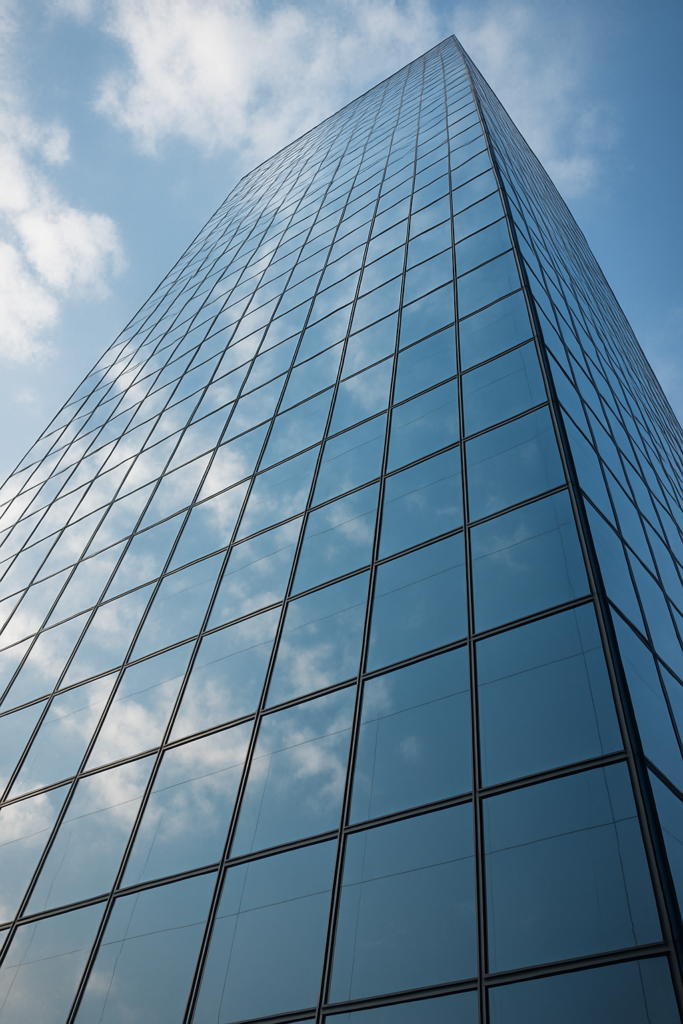In the evolving landscape of modern architecture, glass facades have become a signature of innovation, transparency, and sustainability. Skyscrapers and commercial towers worldwide are designed with vast expanses of glazing that flood interiors with daylight and create striking visual appeal. Yet, these large glass surfaces present challenges: heat loss in winter, excessive solar gain in summer, glare, and safety concerns.
The solution lies in glass low E, a high-performance glazing technology that is now considered essential for tall glass facades. By combining energy efficiency, comfort, safety, and design flexibility, low-E glass ensures that iconic buildings remain both beautiful and functional.
What Is Glass Low E?
Glass low E—short for low-emissivity glass—is manufactured with a microscopically thin metallic coating that reflects infrared and ultraviolet radiation while allowing visible light through. This special layer works like a filter, letting in natural daylight while controlling heat transfer.
- In cold climates: It reflects indoor heat back into the building.
- In hot climates: It blocks unwanted solar energy, reducing cooling loads.
- All year: It minimizes UV rays and glare without compromising transparency.
This adaptability makes glass low E the glazing of choice for tall glass facades across different climates and regions.
Why Glass Low E Is Ideal for Tall Glass Facades
1. Energy Efficiency at Scale
Tall facades face direct exposure to sun and weather conditions. Low-E coatings significantly reduce heat transfer, lowering HVAC demand in high-rise buildings. This results in:
- Lower operating costs.
- Reduced carbon footprint.
- Compliance with green building certifications.
2. Comfort for Occupants
High-rise buildings with expansive glass require a balance of daylight and thermal comfort. Low-E glass eliminates:
- Cold drafts near windows in winter.
- Overheating near sunlit glazing in summer.
- Glare that disrupts productivity and comfort.
3. Aesthetic Freedom
Architects prefer facades that combine transparency with performance. With glass low E, they can design bold, transparent towers without sacrificing efficiency or occupant comfort.
4. Safety and Durability
In tall buildings, safety is paramount. Low-E coatings can be paired with laminated or tempered glass to provide impact resistance, acoustic insulation, and protection against extreme weather. For enhanced safety glazing, see Why is Glass Low E Laminated Used in Safer Glazing? and What Role Does Glass Low E Tempered Play in Design?.
Types of Glass Low E for Facades
Not all low-E glass is the same. Facade applications often use advanced versions designed for performance at scale:
- Hard-Coat Low-E (Pyrolytic): Durable but less efficient.
- Soft-Coat Low-E (Sputtered): Superior insulation and solar control, ideal for facades.
Additionally, architects often choose between double silver and triple silver coatings, which enhance spectral selectivity and thermal performance. While double silver balances performance with cost, triple silver delivers maximum energy savings for skyscrapers and towers.
For deeper insights, see Where Is Glass Low E Most Used in Modern Housing?.
Climate-Specific Benefits of Low-E Glass in Facades
Cold Climates
- Retains warmth by reflecting longwave infrared energy back indoors.
- Reduces heating loads dramatically in tall structures.
Hot Climates
- Minimizes solar gain, cutting cooling costs by up to 30–40%.
- Reduces reliance on artificial shading systems.
Mixed Climates
- Provides year-round adaptability, making it a universal solution for towers across global cities.
Environmental Benefits
Large facades consume significant energy if not properly managed. With glass low E, developers can:
- Reduce building emissions.
- Increase reliance on natural light, lowering electricity demand.
- Protect interiors by blocking 99% of harmful UV rays.
- Extend the life cycle of furnishings, equipment, and HVAC systems.
This ties directly into sustainability goals and net-zero building initiatives. For related eco-friendly practices, see BrightView Landscape | Smart Gardening & Waste Reduction.
Handling and Transporting Glass for Tall Facades
Installing large panels of glass low E requires precision handling. Mishandling can cause damage to coatings or safety risks.
- Stone transportation: Ensures efficient, safe delivery of heavy panels.
- Stone transport: Uses advanced frames that reduce waste, breakage, and environmental impact.
These logistics solutions make sure glass panels arrive intact and ready for installation on tall facades.
Integration with Other High-Performance Features
For maximum performance, glass low E facades are often combined with other technologies:
- Double or triple glazing: Improves insulation by 40–60%.
- Gas fills (argon/krypton): Adds a thermal barrier inside insulating glass units.
- Warm edge spacers: Reduce thermal bridging across frames.
- Precision installation: Ensures full sealing against air and water infiltration.
Together, these features create facades that are not only energy-efficient but also durable and future-ready.
Advantages of Glass Low E for Developers and Occupants
- Cost savings: Lower heating and cooling bills across the lifespan of the building.
- Market appeal: Energy-efficient facades attract premium tenants and investors.
- Future compliance: Meets evolving building codes and sustainability benchmarks.
- Occupant satisfaction: Improved daylight, views, and thermal comfort.
Conclusion
Glass low E has revolutionized the way architects design tall glass facades. It allows developers to pursue ambitious designs without compromising energy efficiency, safety, or comfort.
From skyscrapers in hot climates to high-rise towers in cold regions, low-E glass enables buildings to reduce their carbon footprint, save costs, and enhance occupant wellbeing. When combined with safe logistics solutions like stone transportation and stone transport, it becomes not only a design choice but also a sustainable and safe investment.
As cities continue to grow upward, glass low E will remain the defining material of modern facades—balancing transparency with sustainability and aesthetics with performance.

